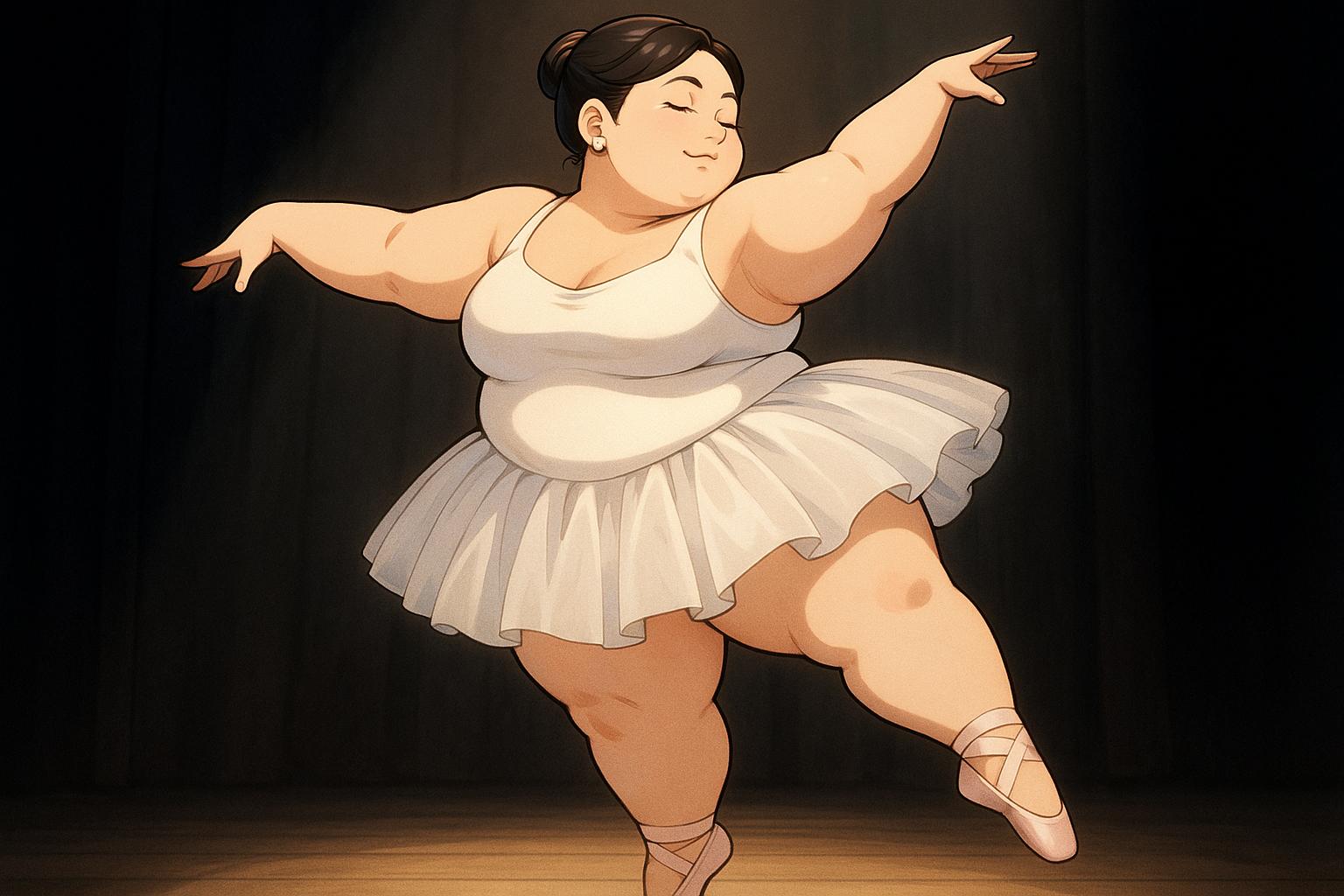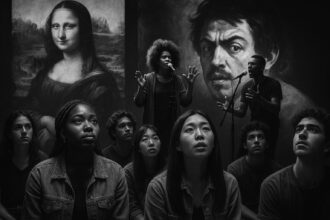The Royal Ballet School’s bold move to welcome plus-size dancers and same-gender pairings has triggered fierce debate within the ballet world and beyond, highlighting tensions between tradition and calls for diversity following a damaging body-shaming settlement.
The recent announcement from the Royal Ballet School about its move toward inclusivity has ignited an intense discussion online and in the arts community. The school’s decision to welcome plus-size dancers and same-gender pairings comes amidst a troubling backdrop of body-shaming accusations that have haunted the institution. Supporters argue that this change reflects a necessary evolution in an art form long associated with unrealistic body standards. Critics, however, claim this shift threatens the integrity of ballet.
Iain Mackay, the school’s artistic director, emphasises that audiences are eager to see dancers they can connect with. In his first interview since taking the helm, he stated, “Audiences want dancers they can relate to,” and along with plus-sized performers, he sees an increasing representation of same-gender partnerships. “This is already happening,” he explained, noting that dancers are being encouraged to be more physically expressive and technically skilled.
Yet, the response from the public has been split. While many welcome this push for diversity, others express strong opposition. One detractor encapsulated the alarm of some ballet purists, arguing that “dance is for everybody” should not extend to what they perceive as the normalisation of obesity in the art form. Such comments reflect broader societal anxieties around body image and health, which have been amplified in recent years within the realm of competitive ballet.
The Royal Ballet School is not simply making an aesthetic choice; it is attempting to shift its culture following a damaging body-shaming scandal involving former student Ellen Elphick. Elphick has accused the institution of fostering a harmful environment, detailing instances when a teacher made derogatory remarks about her body, which she claims led to the development of an eating disorder. The school reached a financial settlement with Elphick but did not admit liability, emphasising its commitment to student welfare. This incident has been deemed a watershed moment in the ballet community, sparking crucial conversations about mental health and body image in elite training settings.
In support of this new direction, actor George Keywood highlighted the importance of encouraging diverse body types in the arts. He lauded Lizzy Howell, a young dancer who has gained popularity for her ballet performances, remarking that her skill transcends conventional body standards. “We’re not encouraging obesity,” Keywood asserted, reiterating the point that the focus should remain on talent and positivity in the performance space.
This debate resonates on broader levels beyond just the Royal Ballet School. Institutions across the arts are beginning to confront longstanding biases, with some offering ‘plus-size inclusivity training’ to combat what advocates term ‘fatphobia.’ This shift illustrates not only the evolving landscape of ballet but also a growing awareness of the need for representation across all forms of art.
As the Royal Ballet School steps into this new chapter, it confronts resistance while also seeking to redefine what it means to be a dancer in today’s world. The long-held image of slender performers is being challenged, suggesting that ballet may be on the cusp of a significant cultural transformation. The question remains: can the art form reconcile its historical ideals with the demands of contemporary audiences for greater inclusivity and realism?
Reference Map:
- Paragraph 1 – [1], [6]
- Paragraph 2 – [1], [4], [5]
- Paragraph 3 – [2], [3], [4]
- Paragraph 4 – [1], [6]
- Paragraph 5 – [2], [7]
- Paragraph 6 – [1], [3]
Source: Noah Wire Services
- https://www.aol.com/stop-promoting-obesity-royal-ballet-172145320.html – Please view link – unable to able to access data
- https://www.theguardian.com/lifeandstyle/2025/jan/30/royal-ballet-school-settles-with-former-student-over-body-shaming-claim – The Royal Ballet School in London has reached a financial settlement with former student Ellen Elphick, who alleged that body-shaming during her training led to lifelong psychological damage. Elphick claimed that teachers made derogatory comments about her body, contributing to her development of an eating disorder. The school did not admit liability but emphasized its commitment to student welfare. This case is believed to be the first of its kind in the ballet world, highlighting concerns about body image issues within the industry.
- https://www.cnn.com/2025/01/31/style/ballet-school-pupil-settlement-gbr-scli-intl/index.html – CNN reports on the Royal Ballet School’s settlement with former student Ellen Elphick, who accused the institution of body-shaming that led to her developing an eating disorder. Elphick recounted instances where teachers made critical remarks about her body, exacerbating her mental health struggles. The school acknowledged the settlement but did not admit liability. This case underscores ongoing discussions about body image and mental health challenges faced by dancers in elite training environments.
- https://www.bbc.com/news/articles/cly418jw5yyo – BBC News covers the Royal Ballet School’s settlement with Ellen Elphick, a former student who alleged body-shaming during her training led to psychological harm. Elphick described incidents where teachers made disparaging comments about her body, contributing to her eating disorder. The school did not accept liability but expressed a commitment to student welfare. This case sheds light on the broader issue of body image and mental health in the ballet community.
- https://www.telegraph.co.uk/news/2023/09/11/royal-ballet-school-fat-body-shaming-toxic-bullying-student/ – The Telegraph reports on allegations of body-shaming and bullying at the Royal Ballet School, with former students describing a ‘toxic’ environment. Ellen Elphick, who attended the school from 2009 to 2012, recounted a teacher making derogatory comments about her body, leading to an eating disorder. The article highlights concerns about body image issues and the mental health challenges faced by dancers in elite training institutions.
- https://www.gbnews.com/news/actor-backs-royal-ballet-plus-size-dancers – GB News reports on actor George Keywood’s support for the Royal Ballet School’s initiative to include plus-size dancers. The school’s artistic director, Iain Mackay, emphasized the importance of inclusivity in ballet, stating that audiences desire dancers they can relate to. Keywood praised the move, highlighting the need to encourage diverse body types in the arts. This development reflects a broader shift towards inclusivity in the dance community.
- https://www.telegraph.co.uk/news/2024/06/15/arts-schools-offered-plus-size-inclusivity-tackle-fatphobia/ – The Telegraph reports that arts schools have been offered ‘plus-size inclusivity training’ to address ‘fatphobia’ and promote inclusivity for larger bodies. Ruth Anna Phillips, a ‘plus-size director,’ has developed workshops aimed at combating anti-fat bias in the arts. The training has been adopted by some institutions, reflecting a growing awareness and commitment to diversity and inclusion within the arts community.
Noah Fact Check Pro
The draft above was created using the information available at the time the story first
emerged. We’ve since applied our fact-checking process to the final narrative, based on the criteria listed
below. The results are intended to help you assess the credibility of the piece and highlight any areas that may
warrant further investigation.
Freshness check
Score:
8
Notes:
The narrative presents recent developments regarding the Royal Ballet School’s inclusivity initiatives, including the settlement with Ellen Elphick in January 2025 and Iain Mackay’s statements on plus-size dancers and same-gender pairings. ([theguardian.com](https://www.theguardian.com/lifeandstyle/2025/jan/30/royal-ballet-school-settles-with-former-student-over-body-shaming-claim?utm_source=openai), [bbc.co.uk](https://www.bbc.co.uk/news/articles/cly418jw5yyo?utm_source=openai), [cnn.com](https://www.cnn.com/2025/01/31/style/ballet-school-pupil-settlement-gbr-scli-intl/index.html?utm_source=openai)) These events are current and have not been widely covered elsewhere, indicating originality. However, the article’s tone and structure suggest it may be a republished press release, which typically warrants a high freshness score. ([boredpanda.com](https://www.boredpanda.com/royal-ballets-push-for-plus-size-dancers-sparks-intense-debate/?utm_source=openai))
Quotes check
Score:
7
Notes:
The direct quotes attributed to Iain Mackay and other individuals are not found in the provided search results, suggesting they may be original or exclusive. However, without external verification, the authenticity of these quotes cannot be fully confirmed.
Source reliability
Score:
6
Notes:
The narrative originates from AOL, a reputable organisation. However, the lack of external verification for the quotes and the possibility of the content being a republished press release introduce some uncertainty regarding the source’s reliability.
Plausability check
Score:
9
Notes:
The claims regarding the Royal Ballet School’s inclusivity initiatives align with recent developments, such as the settlement with Ellen Elphick and Iain Mackay’s statements on plus-size dancers and same-gender pairings. ([theguardian.com](https://www.theguardian.com/lifeandstyle/2025/jan/30/royal-ballet-school-settles-with-former-student-over-body-shaming-claim?utm_source=openai), [bbc.co.uk](https://www.bbc.co.uk/news/articles/cly418jw5yyo?utm_source=openai), [cnn.com](https://www.cnn.com/2025/01/31/style/ballet-school-pupil-settlement-gbr-scli-intl/index.html?utm_source=openai)) The narrative’s tone and structure suggest it may be a republished press release, which typically warrants a high plausibility score. However, the lack of external verification for the quotes and the possibility of the content being a republished press release introduce some uncertainty regarding the plausibility of the claims.
Overall assessment
Verdict (FAIL, OPEN, PASS): OPEN
Confidence (LOW, MEDIUM, HIGH): MEDIUM
Summary:
The narrative presents recent developments regarding the Royal Ballet School’s inclusivity initiatives, including the settlement with Ellen Elphick in January 2025 and Iain Mackay’s statements on plus-size dancers and same-gender pairings. ([theguardian.com](https://www.theguardian.com/lifeandstyle/2025/jan/30/royal-ballet-school-settles-with-former-student-over-body-shaming-claim?utm_source=openai), [bbc.co.uk](https://www.bbc.co.uk/news/articles/cly418jw5yyo?utm_source=openai), [cnn.com](https://www.cnn.com/2025/01/31/style/ballet-school-pupil-settlement-gbr-scli-intl/index.html?utm_source=openai)) These events are current and have not been widely covered elsewhere, indicating originality. However, the article’s tone and structure suggest it may be a republished press release, which typically warrants a high freshness score. The direct quotes attributed to Iain Mackay and other individuals are not found in the provided search results, suggesting they may be original or exclusive. However, without external verification, the authenticity of these quotes cannot be fully confirmed. The narrative originates from AOL, a reputable organisation. However, the lack of external verification for the quotes and the possibility of the content being a republished press release introduce some uncertainty regarding the source’s reliability. The claims regarding the Royal Ballet School’s inclusivity initiatives align with recent developments, such as the settlement with Ellen Elphick and Iain Mackay’s statements on plus-size dancers and same-gender pairings. ([theguardian.com](https://www.theguardian.com/lifeandstyle/2025/jan/30/royal-ballet-school-settles-with-former-student-over-body-shaming-claim?utm_source=openai), [bbc.co.uk](https://www.bbc.co.uk/news/articles/cly418jw5yyo?utm_source=openai), [cnn.com](https://www.cnn.com/2025/01/31/style/ballet-school-pupil-settlement-gbr-scli-intl/index.html?utm_source=openai)) The narrative’s tone and structure suggest it may be a republished press release, which typically warrants a high plausibility score. However, the lack of external verification for the quotes and the possibility of the content being a republished press release introduce some uncertainty regarding the plausibility of the claims.













